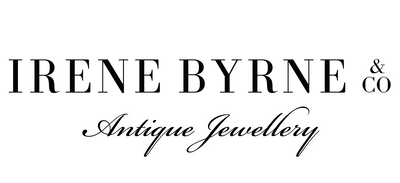Victorian PETOCHI Roma Giardinetto Brooch
Irene Byrne & Co


- Description
-
Specifications
- History
-
A spectacular museum quality "PETOCHI" Roma Giardinetto brooch. This rare, one of a kind piece is dated back to circa 1890, featuring an exquisite floral array of fancy coloured diamonds and natural untreated stones. The term 'Giardinetto' translates from Italian to English as 'garden' and what a marvellous garden this is! The multitude of exceptional quality stones and delightful surprises even to the most experienced gemologist and diamond grader, such as the cloudy fancy white diamond, a true rarity in nature, will imprint its beauty and awe on every person that views it.
Free Shipping and Delivery included with every purchase made Online.
-
Circa: Victorian
Makers Mark: "Petochi" Roma
Gemstones: Fancy Yellow Diamond, Cognac Diamonds, Fancy Pink Diamond, Cloudy Fancy White Diamond, Natural Burmese Untreated Rubies, Blue Sapphires & Diamonds.
Cut: Old Round Cut Diamonds, Round Cabochon Cut Sapphires, Old Mine Cut Fancy Yellow Diamond, Old Round Cut Cognac Diamond, Old Mine Cut Fancy Pink Diamond, Old Cut & Rose Cut Diamonds.
Weight & Colour:
Yellow Diamond: 1 = 0.90ct, Natural Fancy Yellow / VS2
Cognac Diamond: 1 = 0.40ct, Natural Cognac / SI2,
Cognac Diamond: 1 = 0.12ct, Natural Cognac / VS2
Pink Diamond: 1 = 0.14ct, Natural Fancy Light Pink / SI2
White Diamond: 1 = 0.21ct, Natural Cloudy Fancy White/P1
Rubies: 2 = 0.90ct, Natural Burmese, Untreated
Sapphires: 6 = 0.12ct, Light Blue
Diamonds: 55 = 1.40ct, G-H / VS & SI
Rose Cut Diamonds: 14 = 0.14ct / I-J / SI
Material: 9ct Yellow Gold and Silver
Gem Studies Laboratory Valuation
-
The Victorian Period (1837 - 1901):
The Victorian Period defined by none other than Queen Victoria herself, had three stages - the Romantic, the Grand and the Aesthetic.
It was during the Romantic era that Queen Victoria married her Prince, Albert. Sentimental motifs such as; hearts, lover’s knots, flowers, bows, crescent moons and particularly serpents (which was subject to Queen Victoria’s engagement ring which represented enduring love) became extremely popular in jewellery design. Cameos, Enamelling and the use of bright coloured gemstones such as; garnets, amethysts, turquoise, pearls and diamonds gave way to the creation of jewellery that was beginning to speak a symbolic language of its own.
The Grand Victorian era was a sombre period which saw Queen Victoria mourning the death of her beloved husband Albert. It encompassed 20 years during which time Victoria would only wear black and mourning jewellery. As a result the Whitby Jet industry flourished and onyx and deeper coloured garnets rose in popularity. Rings, lockets and brooches were commissioned with compartments for a lock of a loved one’s hair and were often engraved with the person’s name, age and date of death.
The Aesthetic era saw a return to the light-heartedness of the Romantic Era. The discoveries being made through archaeology led to an Etruscan Revival with Greek, Roman and Renaissance influences becoming apparent in jewellery design as well as symbols of good luck and fortune.
